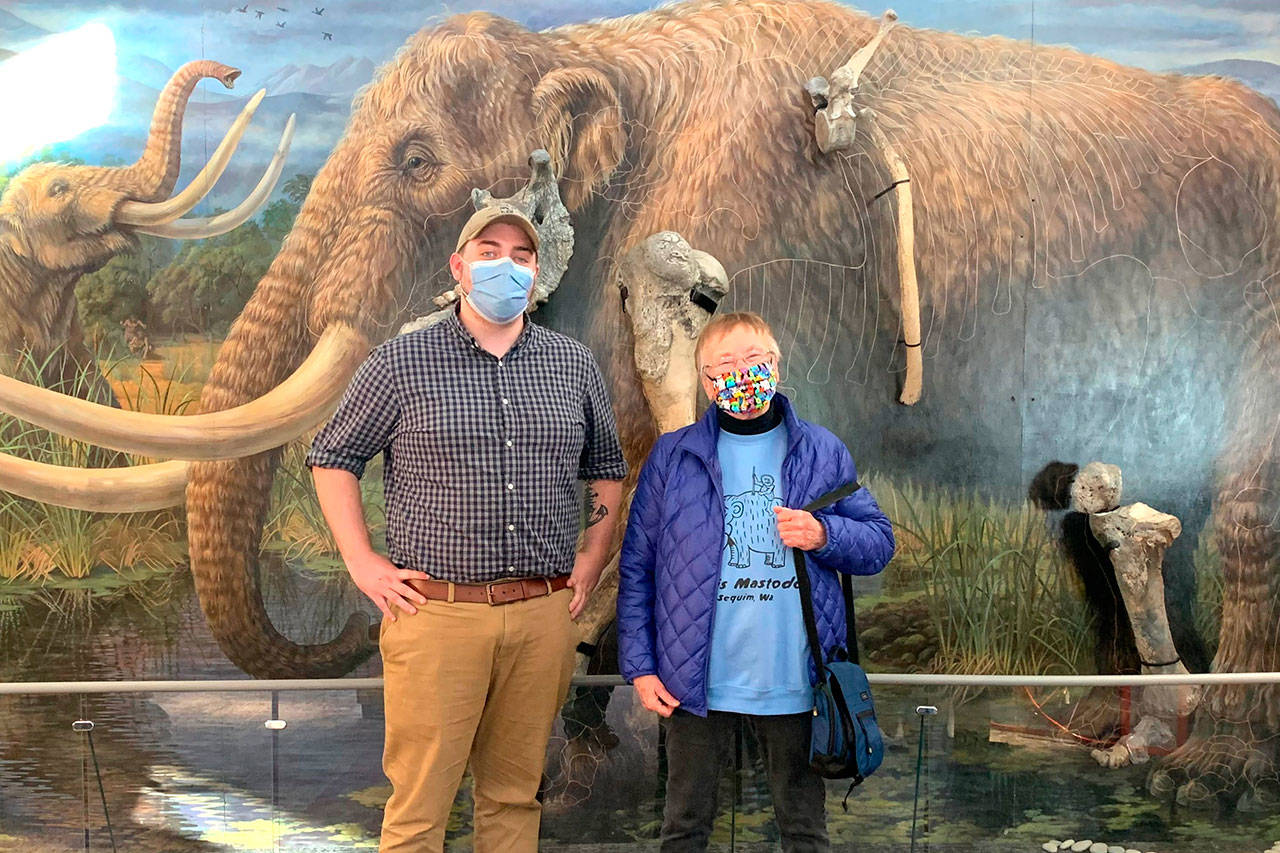New research out of Texas looks to cement just when early indigenous man came to the area, thanks to the Manis mastodon.
Last week, Zachary Newell, a Ph.d. candidate and researcher at the Center for the Study of the First Americans at Texas A&M University. visited the Sequim Museum & Arts to see parts of his subject up close.
Newell has worked about 600 hours in the last year reconstructing a digital replica of a blunt object found in the mastodon’s rib.
He and center founder Dr. Michael Waters authored a new research paper that’s in peer review now, one that shares their belief the object was man-made and was likely used to kill the mastodon.
“It’s redefining the earliest dates we see people in this region (the upper northwest Pacific Coast),” Newell said.
He said where the mastodon was found in the summer of 1977 by Sequim resident Emanuel “Manny” Manis “shows some proposed routes people may have migrated.”
The paper looks to reaffirm Waters’ research that the mastodon and object date back about 13,800 years, compared to earlier research that puts it at about 13,000-years-old.
“It predates the date we thought was possible,” Newell said.
Researchers looked at concerns, critiques and potential gaps from previous investigations to back-up the date of the object and mastodon, Newell said. They anticipate it being published in fall 2021 at liberalarts.tamu.edu/csfa.
Spearheading project
Since its excavation, fossil finds at other sites have researchers creating their own chronologies, Newell said.
“It’s taken a while for the community to warm up to (our ideas),” he said.
“In terms of the community that studies the Americas this has potential to be paradigm shifting. We wanted to clarify the credibility of the find. Find some definitive evidence for this being a product of human life.”
During the digital reconstruction, Newell said it produced promising results.
“We can say it was a spear point (made of bone, possibly ivory or some other bone material) … and how it compared to other bone contact points,” he said.
He and Waters were primary investigators on the paper and collaborated with some biomechanical engineers at Texas A&M to produce an air cannon that would recreate velocities to replicate the same incident of a spear hitting the mastodon’s ribs.
“(The mastodon and spear head) are a significant achievement and find for the field of archaeology, setting how people came to colonize or inhabit the western hemisphere,” Newell said.
Firsthand encounter
On his day trip to Sequim, Newell met with Clare Manis Hatler, Manny’s wife, and Judy Reandeau Stipe, executive director of Sequim Museum & Arts, to view the mastodon tusk and discuss Hatler’s experience with the archaeological find.
“It was fantastic; you don’t get this opportunity to see tusks like that intact,” Newell said.
“With it being displayed in an aquarium helps protect its structural integrity. I personally hadn’t seen anything like that. It was a neat experience.”
He said talking with Manis Hatler was far better than reading site and academic reports.
“It was interesting to speak with Claire and get her life experience and about the active site,” Newell said.
“You don’t often have that personal touch.”
Reandeau Stipe said anytime more research comes out about the mastodon and its significance, it “creates more interest in the gem we have here.”
“Our intent was to be part of everything in our small town that would enhance education,” she said.
“It’s exciting to me to learn something from someone like (Newell).”
Sequim Museum & Arts, 544 N. Sequim Ave., is open by appointment by calling 360-681-2257 or emailing to SequimMuseum@olypen.com.
New exhibits are being worked on, too. For more information, visit www.sequimmuseum.com.



